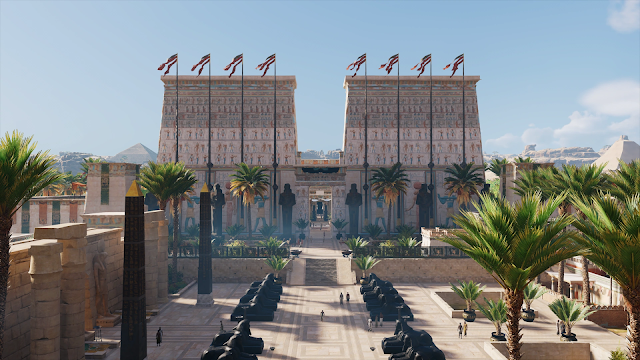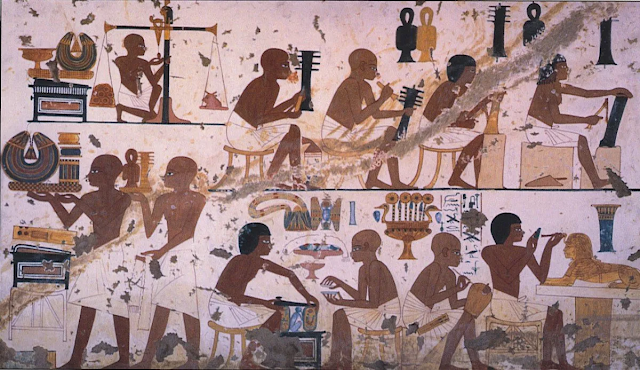Memphis: The Birthplace of Ancient Egyptian Civilization
Historical Overview
Step into the mesmerizing world of ancient Egypt, a civilization known for its breathtaking monuments, intricate hieroglyphs, and profound cultural impact. Cities were the heartbeat of this great civilization, serving as the epicenters of culture, governance, and spiritual life. They were not merely places where people lived; they were dynamic centers that fueled the creativity and ambitions of the Egyptians. Every brick laid and every temple erected reflected a society deeply connected to its land and gods.

Founding of Memphis: Egypt's First City
Imagine the dawn of a new era around 3100 BCE. The landscape of Egypt was about to be transformed forever with the establishment of Memphis, a city destined for greatness. Strategically located at the apex of the Nile Delta, Memphis wasn't just any city—it was the beating heart of trade and defense. Its location was meticulously chosen for its advantageous position, offering control over the Nile and access to the Mediterranean Sea, thereby becoming a vital trade hub. The fertile lands around it supported agriculture, while its proximity to major trade routes facilitated economic prosperity and cultural exchange. Memphis quickly became the nucleus of the newly unified kingdom of Egypt, where traders, artisans, and scholars converged, sharing goods, ideas, and innovations.

Pharaoh Menes: The Unifier and Builder
Meet Pharaoh Menes, a figure of legendary stature who isn't just a name in history but a symbol of unity and strength. Known also as Narmer, he achieved what many thought impossible—he unified the often-warring Upper and Lower Egypt. This monumental feat laid the foundation for the First Dynasty, marking the beginning of a civilization that would endure for millennia. Menes didn't just unite the lands; he had the vision to build Memphis, transforming it into a grand capital that symbolized the unity and prosperity of the nation. His leadership, wisdom, and visionary planning were pivotal in setting the stage for the cultural and architectural grandeur that followed. Menes is often depicted in ancient art triumphantly, wearing the double crown, symbolizing his rule over both regions—a testament to his legacy as the unifier and builder of Egypt's first city.

Memphis: The Great Capital
As Egypt's shining capital, Memphis was more than just a political center; it was the heart of religious fervor and cultural richness. The city's significance extended beyond its administrative functions. It was home to the grand temple of Ptah, one of the major deities in Egyptian mythology, revered as the creator god and patron of craftsmen. This made Memphis not only a political capital but also a spiritual sanctuary. For centuries, Memphis influenced every aspect of Egyptian life, from art and religion to governance and trade. The city thrived as a hub of intellectual activity, where scribes, priests, and scholars gathered to exchange knowledge and ideas. Major state ceremonies, religious festivals, and trade fairs were held here, attracting people from all over Egypt and beyond. This vibrant mix of activities made Memphis a true reflection of the Egyptian civilization's dynamic and multifaceted nature.

Architecture and Infrastructure
Picture a city adorned with magnificent temples, majestic palaces, and well-planned public buildings. The architectural brilliance of Memphis was a testament to the advanced engineering skills and artistic vision of the ancient Egyptians. Temples dedicated to various gods, adorned with towering obelisks and intricate carvings, dotted the landscape. The Great Temple of Ptah was a marvel of its time, with colossal statues and grand courtyards that hosted religious ceremonies and public gatherings. Palaces were not just residences for the pharaohs but also centers of administration, where officials managed the vast empire's affairs. Public buildings, markets, and granaries were meticulously designed to meet the needs of a growing population. The city's layout reflected meticulous planning, with wide streets, well-organized districts, and efficient drainage systems, demonstrating a deep understanding of urban development that ensured the city's prosperity and longevity.

Daily Life in Memphis
Life in Memphis was a bustling symphony of activity and vibrancy. The city's markets buzzed with traders offering exotic goods—spices, textiles, and precious metals—from distant lands. Artisans showcased their crafts, from exquisite jewelry to finely woven fabrics, making the city a vibrant center of commerce and culture. Residents enjoyed a high standard of living, with access to abundant resources, markets, religious institutions, and cultural events. Social activities and community gatherings were integral parts of daily life, with festivals, feasts, and public entertainments fostering a strong sense of community. Education was highly valued, and schools attached to temples educated future scribes, priests, and administrators. The Nile provided a lifeline, with fishermen and farmers working alongside traders and craftsmen, creating a dynamic and interconnected society. The diversity and richness of daily life in Memphis were reflective of its status as a premier city of ancient Egypt.

Memphis in Historical Context
When you compare Memphis to other contemporary cities, its legacy is unmatched. The establishment of Memphis marked the beginning of a new era in Egyptian civilization, characterized by centralized administration, monumental architecture, and a flourishing culture. Its influence extended far beyond Egypt's borders, inspiring architectural styles, urban planning, and governance models in other ancient civilizations. The city's ability to adapt and thrive through various dynasties and historical changes speaks volumes about its resilience and significance. Whether it's the grandeur of its monuments or the vibrancy of its daily life, Memphis set the standard for what a capital city could achieve. The influence of Memphis can be seen in subsequent Egyptian capitals and even in the urban planning of modern cities, underscoring its enduring impact on human history.

Conclusion
Memphis is more than a name in history; it’s a symbol of the ingenuity, ambition, and unity of the ancient Egyptians. Founded by the visionary Pharaoh Menes, it stood as the beacon of unity and progress for centuries. The story of Memphis is a testament to the enduring legacy of a civilization that valued innovation, culture, and community. Its impact on architecture, governance, and daily life continues to inspire us, reminding us of the profound achievements of the ancient world. As we look back on the history of Memphis, we are reminded of the timeless lessons of unity, vision, and resilience that continue to resonate in our modern world. The legacy of Memphis serves as a lasting reminder of what humanity can achieve when guided by wisdom, creativity, and a shared sense of purpose.

